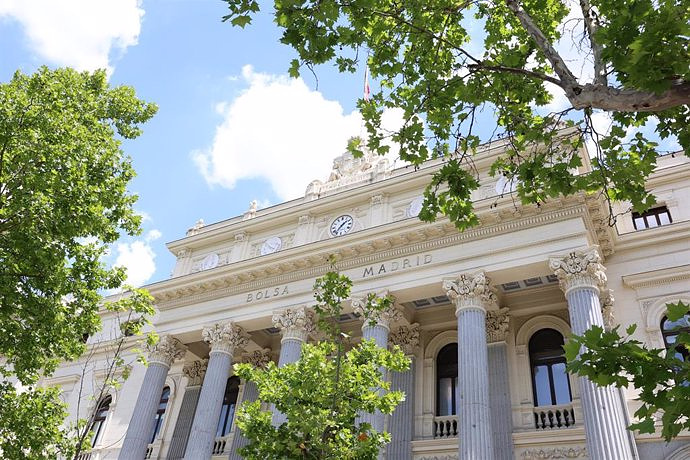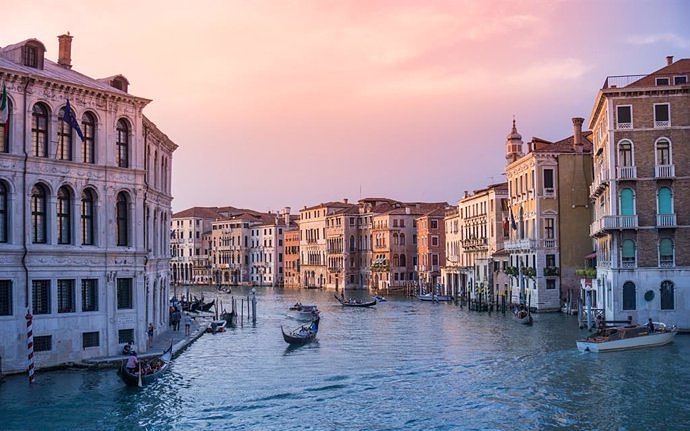you don't need a big field to have fun. Be sure, nevertheless, that your green area is not detrimental to the neighborhood.
The trees, shrubs and shrubs must be planted in compliance with certain distances. If they are intended to exceed two meters, two meters at least should separate them from the neighbouring property. For plants smaller, the distance to be observed is half a meter, at a minimum, in accordance with article 671 of the civil Code. It can be calculated from the middle of the trunk up to the line divisive of the two properties (hedge, fence, ditch, middle of the thickness of the dividing wall). Regulations or local custom may determine different distances, check with your town hall. If you live in a subdivision, remember also to consult the specifications.
ALSO READ >> Are you at fault if you install planter boxes on your balcony ?
Non-observance of the distances
If your plants are, in the light of these rules, too close to the border with the adjacent land, the neighbour can demand that they be uprooted or reduced to a height of two metres. This option between uprooting and pruning belongs to the owner of the plantation in dispute (Cass. 3rd civ. 17/07/1985 n°84-14670).
Your support is essential. Subscribe for $ 1 support UsREAD ALSO >> how did you make the right burn in your garden ?
If it has more than 30 years, you can save your tree, invoking the thirty-year prescription (section 672). It will be necessary to prove that it has exceeded the height of two meters for three decades at least. Any means of evidence is allowed : old photos of your garden, aerial photo of your property after the national geographic Institute (IGN), using a forestry expert to determine the age of the tree (analysis by coring), etc.
Tree rule, but yet source of pollution
Even when the planting distances are respected, your plants can be a source of upset. Third parties have a legal action to make them stop. Because, the judges have gradually posed a principle according to which "no person shall cause to others a disorder abnormal neighbourhood".
READ ALSO >> A co-owner has the right to make plantations in a common court ?
The courts determine on a case-by-case basis if the disorder suffered by the plaintiff is excessive or not. For example, you have the right to plant trees that are a little bit of shade to the house next door, because the loss of sunlight is minimal and tolerable is a nuisance normal neighbourhood. The owner next door can then only accept it, it is what it appears to a court decision (Cass. 2nd civ 17/10/90 n°89-14309). It would be different in the case of excessive pollution. Judges, for example, have found that the disorder was beyond the normal inconveniences of neighbourhood, in a case where a hedge of cypresses prevented from having access to the direct light of the sun. The size of the hedge of conifers has been recorded in court (Cass. 3rd civ 20/12/2018 n°17-15231).
maintenance
in Addition to the observance of distances from plantations, you are required to trim or prune your trees so that branches do not advance to the neighbor (section 673). Failing that, it may force you in court to do so, even if the pruning is likely to destroy the tree (Cass. 3rd civ. 16/01/91 n°89-13698). It is, however, forbidden to carry himself in the cutting of the branches which overhang his land.
note that centenary tree or not, the duty of maintenance remains. The judges remind us regularly that the right of the neighbour to cut the branches that invasive is imprescriptible. In one case, the plaintiffs won the case when they are seeking the cup of the branches of a cedar more than a century old whose hands fell in their swimming pool (Cass. 3rd civ. 30/06/2010 n°09-16257).
READ ALSO >> What are the steps to solve a problem with your neighborhood ?
the case of trees located in an area of woodland classified, the decision was the same as the simple pruning did not result in the destruction of the trees and was not harmful to their conservation (Cass. 3rd civ. 27/04/2017 n°16-13953).
However, it is allowed the neighbour to cut the roots of your plants if they go beyond them in his garden. And, if the invasion of the roots is such that his house, for example, is damaged, it can not only recover damages but also the uprooting of the plants, even if they are planted at the distance legal.
In a case where the roots of cottonwoods had resulted in blistering of the floor covering in the adjacent property, and that the dead leaves were invading the terrace and interfere with water flow, the judges granted an application for felling of trees, the only way to stop the disorders (Cass. 3rd civ. 4/01/90 n°87-18724).
Read our complete file
nuisance
Island of Oléron : the justice authorizes the cock Maurice to continue to sing Dax : he assigns his neighbor to court because of the noise of the ducks Smells in the kitchen, barbecue... What to do ?In another case, the judges were of the opinion that it was impossible to know the amount of roots present in the neighboring garden, that their cup would involve a huge amount of work-damaging totally it, that it would weaken poplar trees that would become hazardous. They have noted that in réalité this type of operation had not been practised, the removal of the roots need of in fact cutting the entire tree, including stump removal. Also, they have simply ordered the felling of plantations (Cass. 3rd civ. 7/07/2016 n°14-28843).

 Exploring Cardano: Inner Workings and Advantages of this Cryptocurrency
Exploring Cardano: Inner Workings and Advantages of this Cryptocurrency Seville.- Economy.- Innova.- STSA inaugurates its new painting and sealing hangar in San Pablo, for 18 million
Seville.- Economy.- Innova.- STSA inaugurates its new painting and sealing hangar in San Pablo, for 18 million Innova.- More than 300 volunteers join the Andalucía Compromiso Digital network in one month to facilitate access to ICT
Innova.- More than 300 volunteers join the Andalucía Compromiso Digital network in one month to facilitate access to ICT Innova.-AMP.- Ayesa acquires 51% of Sadiel, which will create new technological engineering products and expand markets
Innova.-AMP.- Ayesa acquires 51% of Sadiel, which will create new technological engineering products and expand markets STATEMENT: Repair your Debt Lawyers cancels €65,000 in Cantabria with the Second Chance Law
STATEMENT: Repair your Debt Lawyers cancels €65,000 in Cantabria with the Second Chance Law RELEASE: Zoomlion shines at INTERMAT 2024 with a vision for a greener and smarter future
RELEASE: Zoomlion shines at INTERMAT 2024 with a vision for a greener and smarter future Juana Rivas's legal team manages to repeat the trial "that separated the brothers" in Italy
Juana Rivas's legal team manages to repeat the trial "that separated the brothers" in Italy The New York Justice annuls Harvey Weinstein's conviction for sexual crimes and orders a new trial
The New York Justice annuls Harvey Weinstein's conviction for sexual crimes and orders a new trial How Blockchain in being used to shape the future
How Blockchain in being used to shape the future Not just BTC and ETH: Here Are Some More Interesting Coins Worth Focusing on
Not just BTC and ETH: Here Are Some More Interesting Coins Worth Focusing on Retrópolis brings the golden age of video games and computing to the UPV
Retrópolis brings the golden age of video games and computing to the UPV Looking for video games that value the neighborhoods of Valencia
Looking for video games that value the neighborhoods of Valencia UPV researchers improve the efficiency of air conditioning systems using a geothermal heat pump
UPV researchers improve the efficiency of air conditioning systems using a geothermal heat pump València is committed to citiverse and smart tourism to be "the reference technological hub of the Mediterranean"
València is committed to citiverse and smart tourism to be "the reference technological hub of the Mediterranean" A million people demonstrate in France against Macron's pension reform
A million people demonstrate in France against Macron's pension reform Russia launches several missiles against "critical infrastructure" in the city of Zaporizhia
Russia launches several missiles against "critical infrastructure" in the city of Zaporizhia A "procession" remembers the dead of the Calabria shipwreck as bodies continue to wash up on the shore
A "procession" remembers the dead of the Calabria shipwreck as bodies continue to wash up on the shore Prison sentences handed down for three prominent Hong Kong pro-democracy activists
Prison sentences handed down for three prominent Hong Kong pro-democracy activists ETH continues to leave trading platforms, Ethereum balance on exchanges lowest in 3 years
ETH continues to leave trading platforms, Ethereum balance on exchanges lowest in 3 years Investors invest $450 million in Consensys, Ethereum incubator now valued at $7 billion
Investors invest $450 million in Consensys, Ethereum incubator now valued at $7 billion Alchemy Integrates Ethereum L2 Product Starknet to Enhance Web3 Scalability at a Price 100x Lower Than L1 Fees
Alchemy Integrates Ethereum L2 Product Starknet to Enhance Web3 Scalability at a Price 100x Lower Than L1 Fees Mining Report: Bitcoin's Electricity Consumption Declines by 25% in Q1 2022
Mining Report: Bitcoin's Electricity Consumption Declines by 25% in Q1 2022 Oil-to-Bitcoin Mining Firm Crusoe Energy Systems Raised $505 Million
Oil-to-Bitcoin Mining Firm Crusoe Energy Systems Raised $505 Million Microbt reveals the latest Bitcoin mining rigs -- Machines produce up to 126 TH/s with custom 5nm chip design
Microbt reveals the latest Bitcoin mining rigs -- Machines produce up to 126 TH/s with custom 5nm chip design Bitcoin's Mining Difficulty Hits a Lifetime High, With More Than 90% of BTC Supply Issued
Bitcoin's Mining Difficulty Hits a Lifetime High, With More Than 90% of BTC Supply Issued The Biggest Movers are Near, EOS, and RUNE during Friday's Selloff
The Biggest Movers are Near, EOS, and RUNE during Friday's Selloff Global Markets Spooked by a Hawkish Fed and Covid, Stocks and Crypto Gain After Musk Buys Twitter
Global Markets Spooked by a Hawkish Fed and Covid, Stocks and Crypto Gain After Musk Buys Twitter Bitso to offset carbon emissions from the Trading Platform's ERC20, ETH, and BTC Transactions
Bitso to offset carbon emissions from the Trading Platform's ERC20, ETH, and BTC Transactions Draftkings Announces 2022 College Hoops NFT Selection for March Madness
Draftkings Announces 2022 College Hoops NFT Selection for March Madness



























